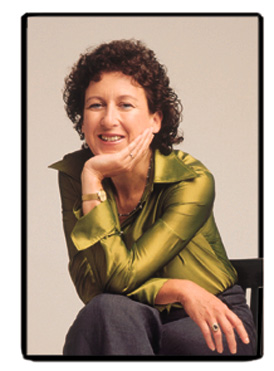Are you a journalist? Please sign up here for our press releases
Subscribe to our monthly newsletter:

Science is in Prof. Lia Addadi's genes. Her maternal great-grandfather was an avid collector of all types of shells, and his collection, which is considered one of the most comprehensive in the world, is now on display at the Hebrew University in Jerusalem.
Addadi, through her research on the complex relationship between proteins and crystals, studies how mollusks form their shells. But her research has provided a bridge to her great-grandfather in more ways than one.
"My great-grandfather was a civil engineer who developed an interest in a number of different areas, including shells," says Addadi, Head of the Weizmann Institute's Structural Biology Department. "My mother remembers looking with her grandfather at shells through a microscope."
Though he had decided to donate the collection to the University of Padua, Addadi's great-grandfather changed his mind after World War II. But he forgot to tell Addadi's great-grandmother where it should go instead. Shortly after he died in 1951, she decided to send it, as Addadi would later find out, to the Hebrew University of Jerusalem.
Addadi was born in 1950 in Padua, Italy. "Even as a child, I was interested in how things are on the inside. My interest began with the human body, but I found that anatomy was simply not enough -- I wanted to know things in greater detail. This led to my interest in chemistry and eventually brought me to the area shared by biology and structural chemistry."
After receiving her master's degree in chemistry from the University of Padua in 1973, Addadi decided to move to Israel. "As long as I can remember, I'd always wanted come to Israel," says Addadi, who recalls declaring once, at the age of 12, that she would become a scientist at the Weizmann Institute.
Since Addadi's husband was working in the center of Israel, she approached nearby universities. "At other places, I felt a bit like a beggar; they kept asking me 'Why are you here? We don't need any more graduate students.' But when I came to the Institute, I immediately felt that they really wanted me here ? that was quite a shock!"
She earned her Ph.D. under the tutelage of Prof. Meir Lahav of the Materials and Interfaces Department. "There was one particular question he was researching that really appealed to me: How is it that all the amino acids in proteins have the same symmetry? That's when I got 'hooked'." Addadi says. "The fine line between biology and chemistry also has an aesthetic appeal. For example, crystals or the skeletons that living creatures build are amazingly beautiful, especially when you look at their structure greatly magnified under an electron microscope."
Although Addadi knew about her great-grandfather's shell collection, she had no clue as to its whereabouts until she returned to the Weizmann Institute from a postdoctoral fellowship at Harvard University. She began collaborating with Steve Weiner, who had just joined the Institute and was working on biomineralization and shells. Addadi commented on the coincidence of her working on shells, considering that her great-grandfather used to collect them. "Steve then told me he knew about a wonderful collection that had been donated by a family in Venice, and that he used to go to see it to study the taxonomy of specific shells. It took but a few phone calls to verify that it was my great-grandfather's collection."
Addadi was quite pleased to find her great-grandfather's collection by way of her own research. "This really got me involved in the collection, and what amazes me is the coincidence that brought me back full circle to my family."